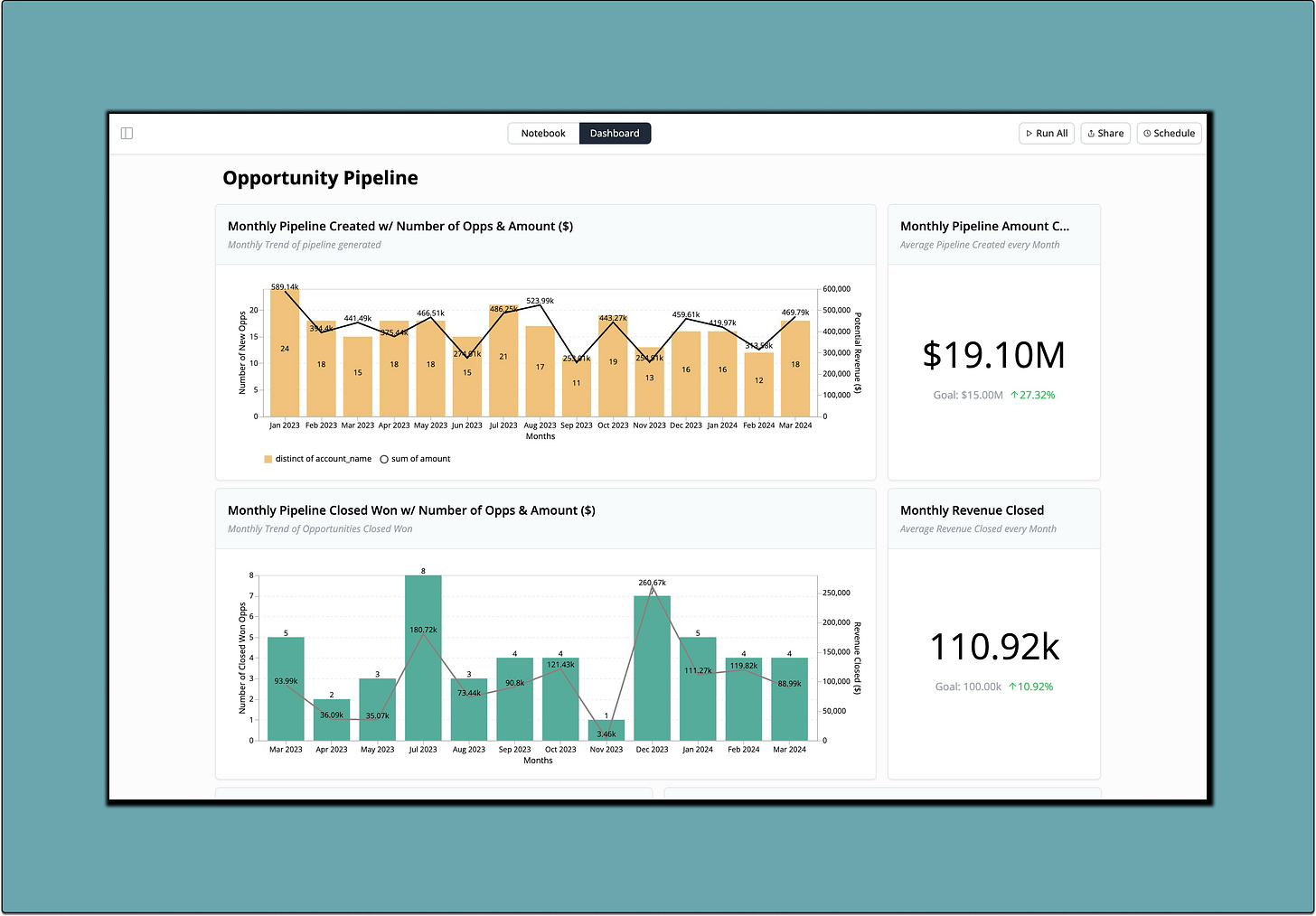Founder’s Guide to Full Funnel Reporting
..From traffic to revenue, combined in one view.
Alright, let’s talk about understanding the entire funnel—from the moment someone visits your site to when they sign on the dotted line. If you're running a growing business, tracking each stage of the funnel is non-negotiable. Here's how I break it down to keep everything in check.
Show The Big Picture First
At a high level, I’m tracking:
Avg Monthly Traffic (Google Analytics)
Avg Monthly Leads (HubSpot)
Avg Monthly Pipeline Created (Salesforce)
Avg Monthly Closed Won Deals (Salesforce)
At this point you already have an idea of what you’d want to look into deeper. However, while doing a full funner overview, everything from top to bottom is almost always connected and we need to now go one level deeper at each stage of the funnel to spot trends and bottlenecks.
Top Funnel: Acquisition
This is where it all starts.
We’re not just interested in how many people land on the site—we care about where they come from, what they do, and if they convert not only to leads but qualified leads that convert to Opps/Deals.
Monthly Trend of Leads by Source: I want to see where leads are coming from—organic, paid, email, etc. It tells me where to double down.
Monthly Trend of Leads by Stage: How are these leads progressing? Are they getting stuck in a particular stage?
Mid Funnel: Opportunity Pipeline
Now let’s talk about opportunities. Leads are great, but until they turn into deals in the pipeline, they’re just names in your CRM.
Monthly Pipeline Created: I’m tracking both the number of opportunities and their dollar value. What’s entering the pipeline?
Monthly Pipeline Closed Won: How much of that pipeline is actually closing? Are we moving deals fast enough, and how much are we winning?
Monthly Closed Lost: This is important too—how many deals are we losing, and more importantly, why?
Revenue Lost by Reason: Understanding why deals are lost gives us clear areas to fix—pricing, product fit, competition, whatever it may be.
Sales Team Performance
Finally, we need to keep an eye on how the sales team is performing. After all, they're the ones converting pipeline into dollars.
Pipeline Coverage Ratios by Reps: Are individual reps keeping up with the average? This shows who’s ahead and who needs help.
Avg Days to Close by Reps: How quickly are deals closing? Speed matters. The faster a deal closes, the quicker you can reinvest in growth.
Days to Move Between Stages by Reps: This helps us see if there are bottlenecks in the sales process and who’s getting stuck where.
Win/Loss Ratios by Reps: Who’s winning more often? This tells us not just who’s hitting targets, but why they are (or aren’t).
Nuances
To be honest, the funnel isn’t a linear, one-size-fits-all process.
There are nuances at every stage, and you won’t always get it right the first time. But the beauty of this kind of analysis is that it gives you clarity.
Ultimately, this is about constant iteration. You’re not just tracking numbers for the sake of it. You’re looking for patterns—where are you gaining momentum, and where are you bleeding potential revenue?
If you’re willing to face the data head-on, you’ll find opportunities to grow faster, smarter, and more sustainably.
It’s not glamorous, but it’s how you win.
This one is the most popular use-case amongst our customers, so we decided to create a template for you to get started easily.







